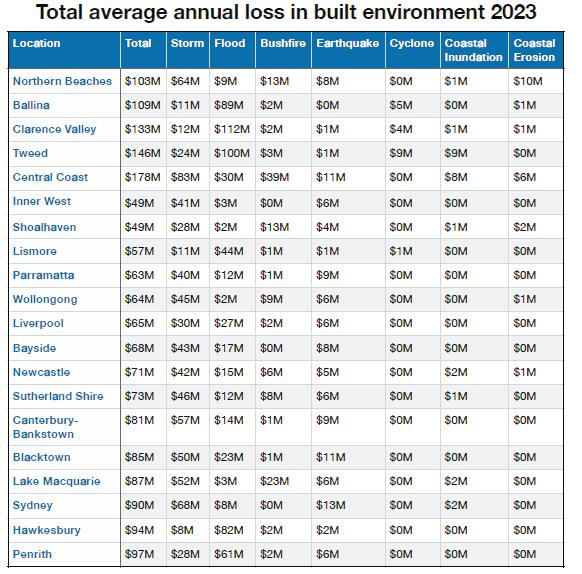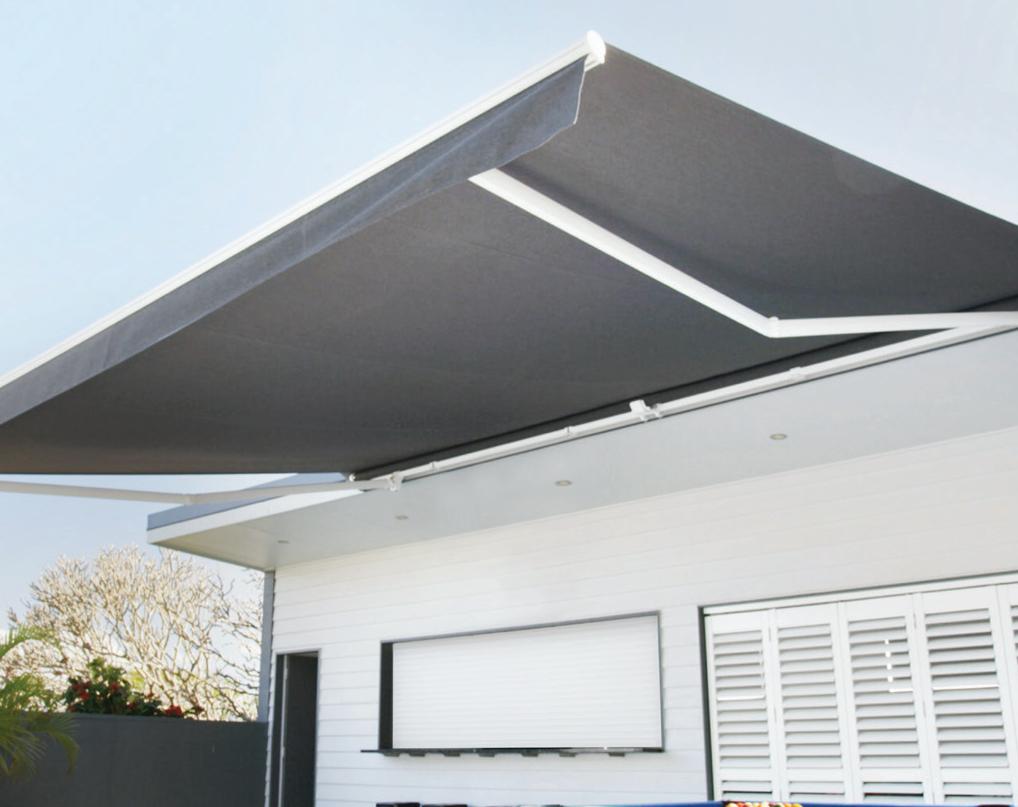
5 minute read
Northern Rivers to bear brunt of future disaster costs
By Tim Howard
The Northern Rivers area will bear the brunt of the costs of dealing with worsening natural disasters in coming decades warns the NSW Reconstruction Authority.
The authority predicted disaster recovery costs would nearly treble by 2060 in the frst State Disaster Mitigation Plan, which was released on Friday.
In 2023 the estimated average annual cost of disaster recovery was $3.1 billion and by 2060 this would jump to $9.1 billion.
And fooding in the Clarence Valley was the costliest item in league tables of disaster costings comparing estimates from last year to predictions for 2060.
In the total average annual loss in built environment 2023 the Clarence Valley disaster recovery bill came in at
$133 million, of which fooding contributed $112 million.
Coastal areas of the Northern Rivers fgured in the top four places on the table in 2023, with Tweed topping the locals with a bill of $146 million. The Clarence was next and Ballina’s bill came in at $109 million.
Lismore was near the bottom of the table with a disaster bill in 2023 of $57 million.
The NSW Central Coast topped the table with a disaster recovery bill estimated at 178 million.
The NSW Reconstruction Authority was established following the 2022 NSW Independent Flood Inquiry, led by Professor Mary O’Kane and Mick Fuller.
The State Disaster Mitigation Plan was a requirement of the NSW Reconstruction Authority Act 2022, which required the NSW Reconstruction Authority to prepare and
NOW is the time to buy
From $325,000.
On care services 24/7 implement a state disaster mitigation plan.


It was developed to provide guidance for mitigation of disasters across NSW.
The plan outlined how the rising costs of disasters can be addressed by refocusing government policy towards riskreducing actions, and details how government agencies can work together to help communities prepare for worsening bushfres, heatwaves, foods, storms and coastal erosion.
The NSW Reconstruction Authority will help coordinate delivery of the actions to improve community resilience and mitigate disasters.
Since 2019, NSW residents have endured more than 65 declared disasters, costing taxpayers more than $6 billion, with more than 20,000 homes damaged in 2022 alone.
The authority said climate change was expected to increase the severity and frequency of natural disasters. The plan includes a toolkit of measures to reduce communities’ exposure and vulnerability to disasters through awareness and preparedness campaigns, evacuation infrastructure and warning systems.





The actions include:
• Boosting the State’s “Get Ready” preparedness campaigns to ensure communities are better equipped.
• Building a new local government toolkit to guide councils in preparing for disasters and the impacts of climate change.
• Developing local Disaster Adaptation Plans that will help communities become more aware and prepared and will inform future planning processes and rebuilding and reconstruction efforts after a disaster occurs.
• Developing early warning systems so communities are better prepared when disaster strikes.
• Identifying mitigation infrastructure strategies and approaches to funding.
• Working with industry to review building codes to factor in greater building resilience through materials and design.
• Reviewing insurance levy arrangements and working with the insurance sector to factor in affordability in adaption planning.
• Minister for Planning and Public Spaces
Paul Scully said historically, the state’s ability to prevent and prepare for disasters hadn’t worked as there has been only 3% of funding spent on prevention and 97% spent after an event.
“This is our opportunity to build better so that we can better deal with disasters that come and equip communities with what they need.”
Minister Emergency Services Jihad Dib said the government was shifting the dial in how it addressed disasters as well as making sure it did not inadvertently put people in harm’s way through bad planning decisions.
“For the frst time, NSW fnally has a plan to begin turning that around with information on how we can invest in reducing risks before disasters occur to better protect communities,” he said.
“Successive years of unprecedented natural disasters have highlighted the need for NSW to meet the challenges of the future by working to reduce both the actual and social costs of natural hazards to our communities.”
He said it had not been easy.
“There is no easy or simple solution to these challenges,” he said. “The focus of the State Disaster Mitigation Plan is to provide a framework and clear actions for reducing risk where we can, and adapting where we can’t, through improved warning systems and a focus on resilient infrastructure.
“The increasing risk of natural disasters also increases pressure on our emergency services staff and volunteers, who put themselves on the line keeping communities safe. This plan will help to manage that risk by reducing the impact of disasters before they occur.”
Deputy CEO of the NSW Reconstruction Authority Simone Walker was proud of the document.
“The NSW Reconstruction Authority is the frst entity of its kind in NSW with the dual responsibility of proactively reducing the impact of future disasters before they happen, as well as responding after,” she said.
“This milestone plan gives NSW communities the frst ever roadmap to reduce the risk of future disasters.
“This is critical because every dollar we invest in reducing risks will help people recover faster and reduce the cost of future disasters.”
Clarence Valley mayor Peter Johnstone was not ready to comment on the plan. He said he would discuss it with council staff and release a response during the week.


















